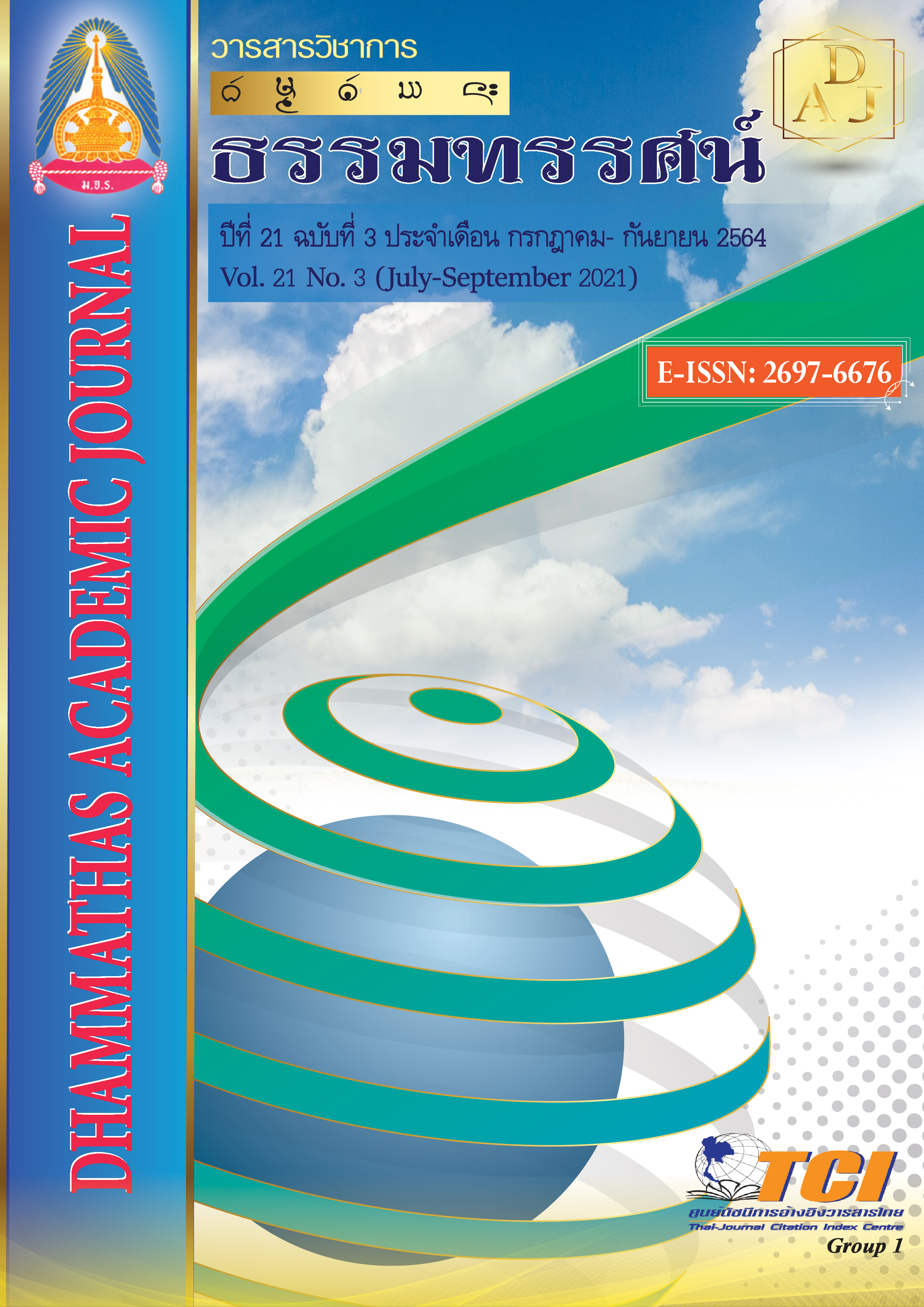Potential Community and Community Members around Chaiyaphum Rajabhat University to Develop a Livable City
Main Article Content
Abstract
This research aims to: 1) to study the potential of communities and surrounding community members, Chaiyaphum Rajabhat University in the development of the surrounding cities, Chaiyaphum Rajabhat University, 2) to study the condition of problems arising in the communities surrounding Chaiyaphum Rajabhat University and find solutions. At present, the community surrounding Chaiyaphum Rajabhat University has rapidly expanded from an agricultural society to an urban society, which has caused many problems. In this research, research was conducted in communities surrounding University in Na Fai Sub-district, Na Siew Sub-district and Huai Ton Sub-district. Mueang Chaiyaphum District Chaiyaphum Province. The tool for collecting data was a questionnaire, which was a mixed research of 395 people using clustered sampling initially. After that, random sampling was used. Data analysis uses percentage statistical analysis was analyzed and synthesized by interpreting from the content of the interview.
The results of the research were as follows:
1. Communities in all 3 sub-districts have community potential and community members contributing to the development of the city surrounding Chaiyaphum Rajabhat University to be livable. Na Siew Sub-district, convenient transportation is a connection area. There is a fast route to transport agricultural and community products. There are famous tourist attractions such as Tad Fa Waterfall, an eco-tourism village and famous silk products. Huai Ton Sub-district, convenient transportation, strong leader. There are many forest foods such as wild mushrooms, sweet vegetables and there are places to visit Pha Iang Waterfall. And Na Fai Sub-district there are many student dormitories that are urban. There is a tourist attraction Tad Ton Waterfall. Which is a famous tourist attraction of Chaiyaphum Province.
2. Conditions of problems that arise in the community, such as drought problems, loss of assets in investment in occupation, frequent accidents. The solutions include: Leaders and governments should seriously address drought problems, such as drilling wells or dredging swamps to store water for use in the dry season. Support sources of funding for careers such as lending at low interest rates and a helmet wearing campaign driving by traffic rules. Don't drink and drive campaign and drive recklessly.
Article Details
References
ณัฐดนัย แก้วโพนงาม. (2557). ศักยภาพชุมชนในการพัฒนาอุทยานแห่งชาติป่าหินงามจังหวัดชัยภูมิ. (รายงานการวิจัย). ชัยภูมิ: มหาวิทยาลัยราชภัฏชัยภูมิ.
_______. (2560). เศรษฐศาสตร์การเมืองในบริบทสังคมไทย ภายใต้สภาวะความขัดแย้งในจังหวัดชัยภูมิ. ชัยภูมิ: มหาวิทยาลัยราชภัฏชัยภูมิ.
_______. (2560). ความเหลื่อมล้ำและความไม่เท่าเทียมทางสังคมที่มีผลต่อการทุจริตคอร์รัปชั่น ในจังหวัดชัยภูมิ. (รายงานการวิจัย). ชัยภูมิ: มหาวิทยาลัยราชภัฏชัยภูมิ.
ดุษฎี ทายตะคุ และชัยชนะ แสงสว่าง. (2543). การเปลี่ยนแปลงลักษณะการตั้งถิ่นฐานชุมชนเมือง อันเนื่องมาจากนโยบายพัฒนาภาคอุตสาหกรรม กรณีศึกษา: อำเภออุทัย และอำเภอท่าเรือ จังหวัดพระนครศรีอยุธยา. กรุงเทพฯ: จุฬาลงกรณ์มหาวิทยาลัย.
พิชิต ฤทธิ์จรูญ. (2551). ระเบียบวิธีการวิจัยทางสังคมศาสตร์. กรุงเทพฯ: เฮ้าออฟเคอร์มีสท์.
พิชิต พิทักษ์เทพสมบัติ. (2550). การสำรวจโดยการสุ่มตัวอย่าง: ทฤษฎีและปฏิบัติ. กรุงเทพฯ: สถาบันบัณฑิตพัฒนบริหารศาสตร์.
รัตนา โตสกุล. (2556). อีสานนิยม: ท้องถิ่นนิยมในสยามประเทศไทย. กรุงเทพฯ: มูลนิธิโครงการตำราสังคมศาสตร์และมนุษยศาสตร์.
วิซุตตา ชูศรีวาส. (2559). การดำเนินงานหมู่บ้านเศรษฐกิจพอเพียง บ้านหัวอ่าว ตำบลบางช้าง อำเภอสามพราน จังหวัดนครปฐม. นนทบุรี: มหาวิทยาลัยราชพฤกษ์.
เสรี พงศ์พิศ. (2548). ฐานคิด: จากแผนแม่บทสู่วิสาหกิจชุมชน. กรุงเทพฯ: พลังปัญญา.
สุจิตรา บุณยรัตพันธ์. (2552). ระเบียบวิธีวิจัยสำหรับรัฐประศาสนศาสตร์ คณะรัฐประศาสนศาสตร์. กรุงเทพฯ: สถาบันบัณฑิตพัฒนบริหารศาสตร์.
สำนักทะเบียนอำเภอเมืองชัยภูมิ. (2559). ตารางแสดงจำนวนประชากรจำนวนครอบครัว และจำนวนหมู่บ้านตำบลนาเสียว อำเภอเมืองชัยภูมิ จังหวัดชัยภูมิ. ชัยภูมิ: สำนักทะเบียนอำเภอเมืองชัยภูมิ.
โอฬาร ถิ่นบางเตียว. (2554). พัฒนาการของโครงสร้างอํานาจท้องถิ่นในภาคตะวันออก: วิเคราะหในเชิงเศรษฐศาสตรการเมือง. (วิทยานิพนธ์ปรัชญาดุษฎีบัณฑิต). กรุงเทพฯ: มหาวิทยาลัยรามคําแหง.
Charles, K. (2008). Northeastern Thai Ethno regionalism Updated. The 10th International Conference on Thai Studies: January 9-11, 2008. Bangkok: Thammasat University.

